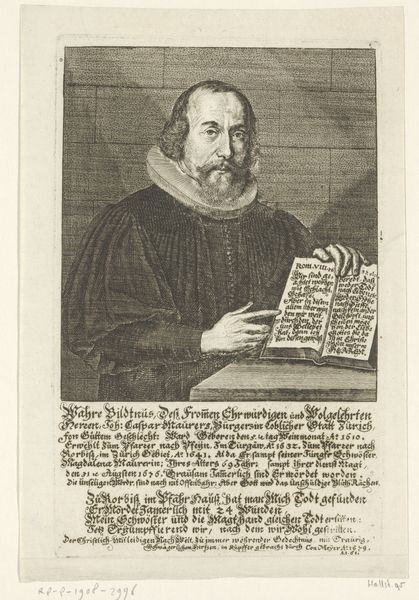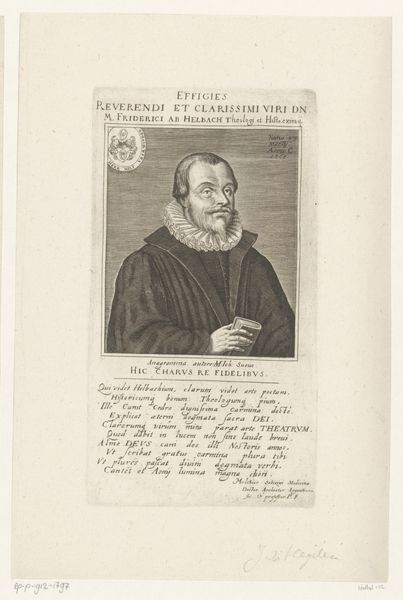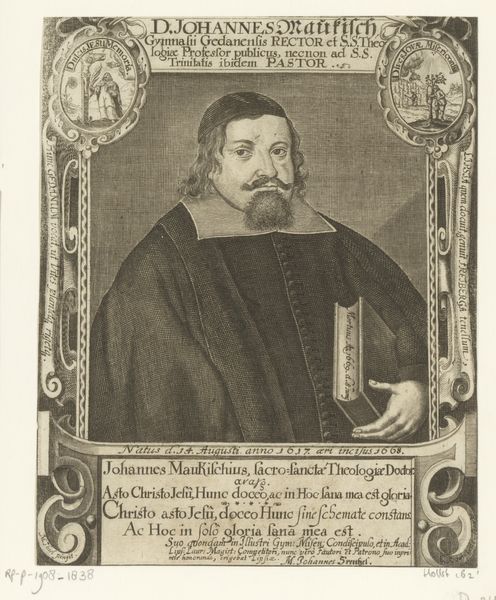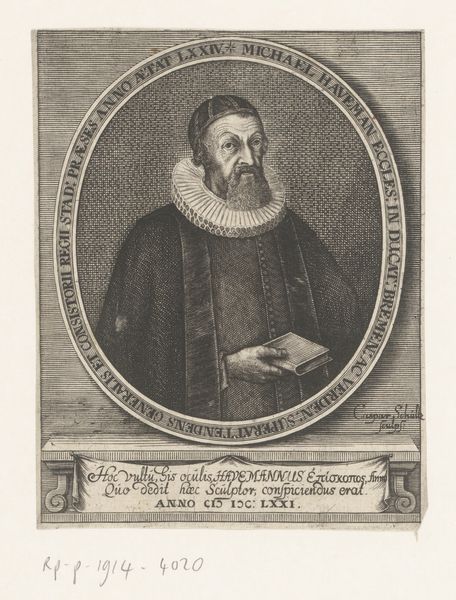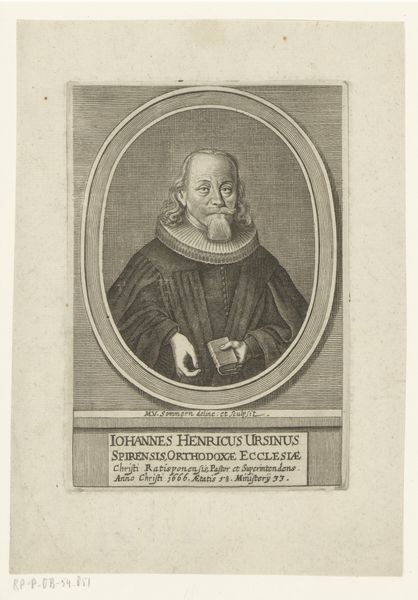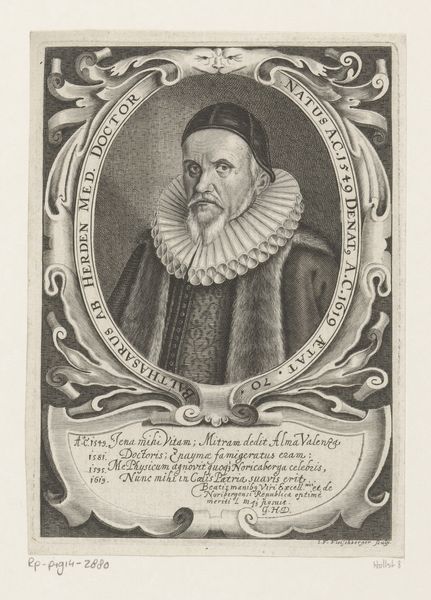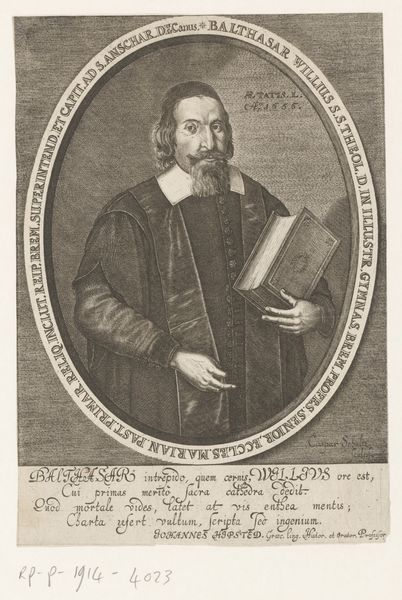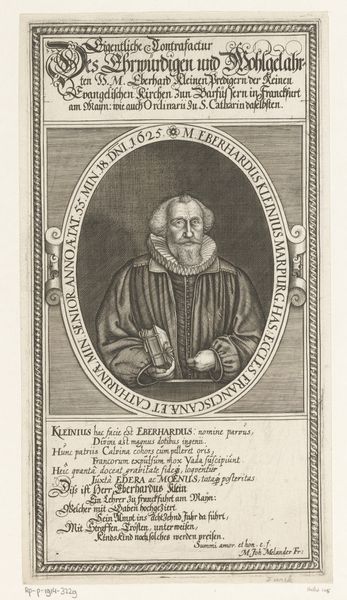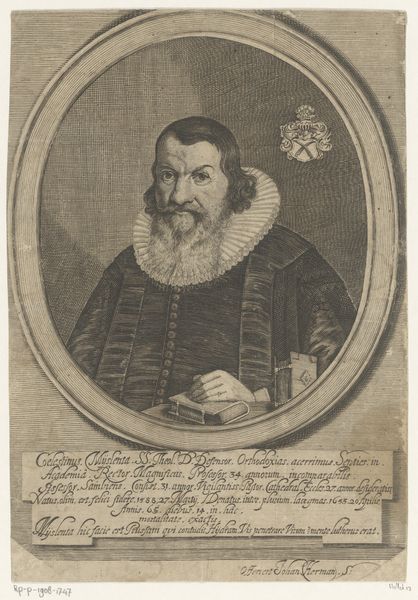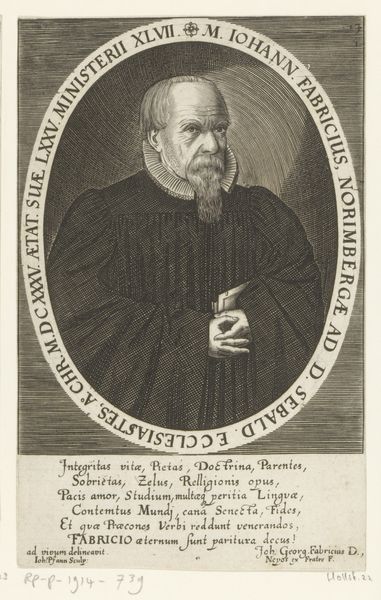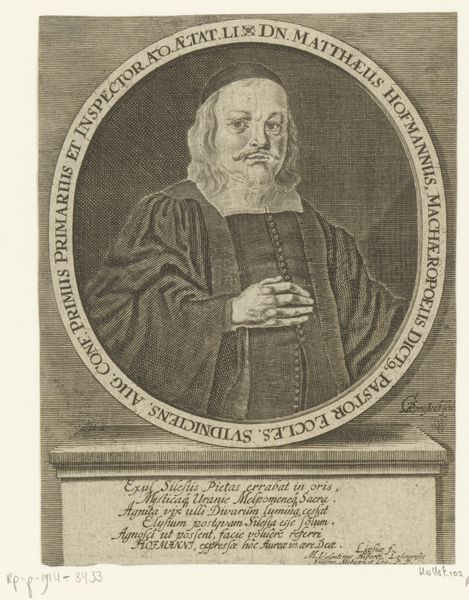
print, engraving
#
portrait
#
baroque
# print
#
old engraving style
#
history-painting
#
engraving
Dimensions: height 202 mm, width 149 mm
Copyright: Rijks Museum: Open Domain
Curator: So, here we have "Portret van Johann Kaspar Schweitzer," a print from somewhere between 1688 and 1712, created by Johannes (II) Meyer. It has quite a formal feel. The engraving technique is striking – very precise lines creating the shading. What are your initial thoughts? Editor: It’s very detailed for an engraving! The subject, this Johann Kaspar Schweitzer, seems deep in thought. The textures are impressive - you can almost feel the paper of the book and the weight of his robe. As a print, what's particularly important here? Curator: Think about the social context. The material – an engraving – and the process of its production are paramount. Engravings allowed for relatively inexpensive replication. How do you think that accessibility impacted its role as a portrait? Was it about personal connection or broader dissemination of status? Editor: That's a good point! Because it's a print, it meant more people could have access to it. Perhaps it was less about intimate portrayal and more about projecting authority through widespread availability. Curator: Exactly. Consider the labor involved in creating this matrix. Every line painstakingly carved, each impression a result of physical effort. It highlights not just the sitter, but also the craft and the means of production. It exists as both art and a commodity for circulation within society. How does that blend influence our perception of it? Editor: I never thought about the craft so much, but I guess all those lines were carved, by hand! That process shows the skills needed for creating something like this. Maybe this pushes our understanding of prints being simple to reproduce! Curator: Precisely. It’s a dialogue between high art and craft. Examining the labor and materials grounds us in the historical realities of its creation and its function. What do you make of it now? Editor: Now I appreciate it even more knowing what’s behind the surface. It makes me want to study this more and learn other artist's work that also did portraits by engraving. Thanks for sharing the new insights!
Comments
No comments
Be the first to comment and join the conversation on the ultimate creative platform.
